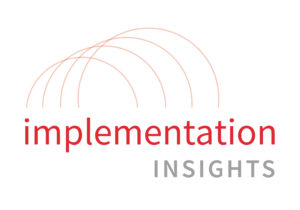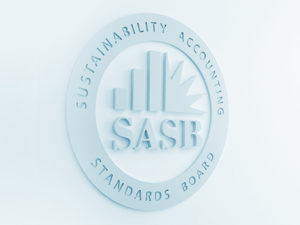
Janine Guillot
CEO, The SASB Foundation
A group of approximately 120 chief executive officers from many of the world’s largest and most influential companies recently sent a clear signal to global capital markets: Sustainability is on the corporate agenda. At the World Economic Forum (WEF) annual meeting in January, the International Business Council (IBC) released a consultation draft of a report seeking to establish common metrics for companies to use in demonstrating long-term value creation to key stakeholders on an internationally consistent basis across industries.
The IBC report draws on the work of many international frameworks and standard-setters, including that of the Sustainability Accounting Standards Board (SASB) and the Global Reporting Initiative (GRI). We have been asked repeatedly in recent weeks for our take on the IBC’s effort, including whether the IBC effort replaces the need for companies to use the SASB standards to guide disclosure of financially material ESG factors to their investors.
First and most importantly, we’re encouraged to see leading CEOs acknowledge that effective management and disclosure of environmental, social, and governance (ESG) risks and opportunities are top priorities for business leaders. This recognition is a welcome affirmation that both companies and investors are increasingly focused on delivering sustainable, long-term value.
Furthermore, SASB applauds the IBC report’s stated objective “to encourage greater cooperation and alignment among existing standards as well as to catalyze progress towards a systemic solution such as a generally accepted international accounting or other reporting standard in this respect.” SASB shares this goal and is actively pursuing such cooperation and alignment through initiatives like the Corporate Reporting Dialogue (CRD) and Impact Management Project (IMP). We hope that the IBC report accelerates progress toward a globally accepted system for establishing and maintaining sustainability disclosure standards.
SASB further appreciates that the IBC has not endeavored to reinvent the wheel, instead incorporating metrics and disclosures from existing frameworks and standards like SASB’s and GRI’s. As IBC Chairman Brian Moynihan and WEF Executive Chairman Klaus Schwab wrote in the preface to the report, the IBC initiative is “building upon the extensive and rigorous work that has already been done.” Moynihan and Schwab note that, “The objective is to amplify [the existing] standards and more fully harness their synergies rather than create a new standard altogether.”
In that context, we’re naturally pleased that the IBC references metrics from SASB standards as “disclosures that enable companies to demonstrate their long‑term viability and sustainable business practices.” Indeed, a growing body of research has demonstrated a quantitative link between performance on the sustainability topics identified in SASB standards and financial returns—a win-win-win scenario that delivers positive outcomes for companies, investors, and society at large.
We’re also pleased that the report references a larger number of metrics from our colleagues at the Global Reporting Initiative (GRI), which is expected given the IBC’s particular areas of focus. First, the initiative aims to help companies demonstrate their contributions to progress on the UN Sustainable Development Goals (SDGs). Second, the IBC prioritises “core metrics [that] are intended to be universal and industry‑agnostic.” These are strengths of the GRI Standards.
However, to sufficiently understand the ESG-related risks and opportunities facing portfolio companies, investors also need the financially material, industry-specific disclosures that SASB standards are designed to facilitate. Such disclosure offers insight into performance on the sustainability topics that are most likely to impact the financial performance of a company, and it provides investors with comparable information among industry peers. This is why SASB’s industry-specific standards are supported by global investors with over $34 trillion in assets under management, including many of the world’s largest asset managers and asset owners.
The value of such information is not lost on WEF Managing Director Richard Samans, who stresses that the IBC’s aim is in part to elevate and broaden the application of disclosure frameworks like SASB’s, CDSB’s, GRI’s, and the Task Force on Climate-related Financial Disclosures (TCFD). For example, Samans says, “The Forum’s IBC effort is not intended to replace or displace the industry-specific ESG metrics that investors need and that markets have begun to coalesce around. These are complementary and mutually reinforcing—not competing—initiatives.”
SASB shares Samans’ view along with the IBC’s conviction that companies need useful tools for “measuring and communicating sustainable value creation.” We believe the industry-specific disclosures suggested by SASB standards complement and supplement the industry-agnostic metrics included in the IBC’s consultation draft.
Similarly, we believe the interests of investors and those of society are not mutually exclusive, and we view this common ground as the most fertile soil in which sustainable economic growth can take root. SASB standards are designed to help markets identify and understand the “sweet spot” where investment can generate social and environmental dividends while also producing financial returns. Progress in this arena is not about choosing sides, but rather, as Moynihan and Schwab wrote, about “balancing short‑ and longer‑term business pressures in order to ensure that shareholders and other stakeholders prosper together.”


